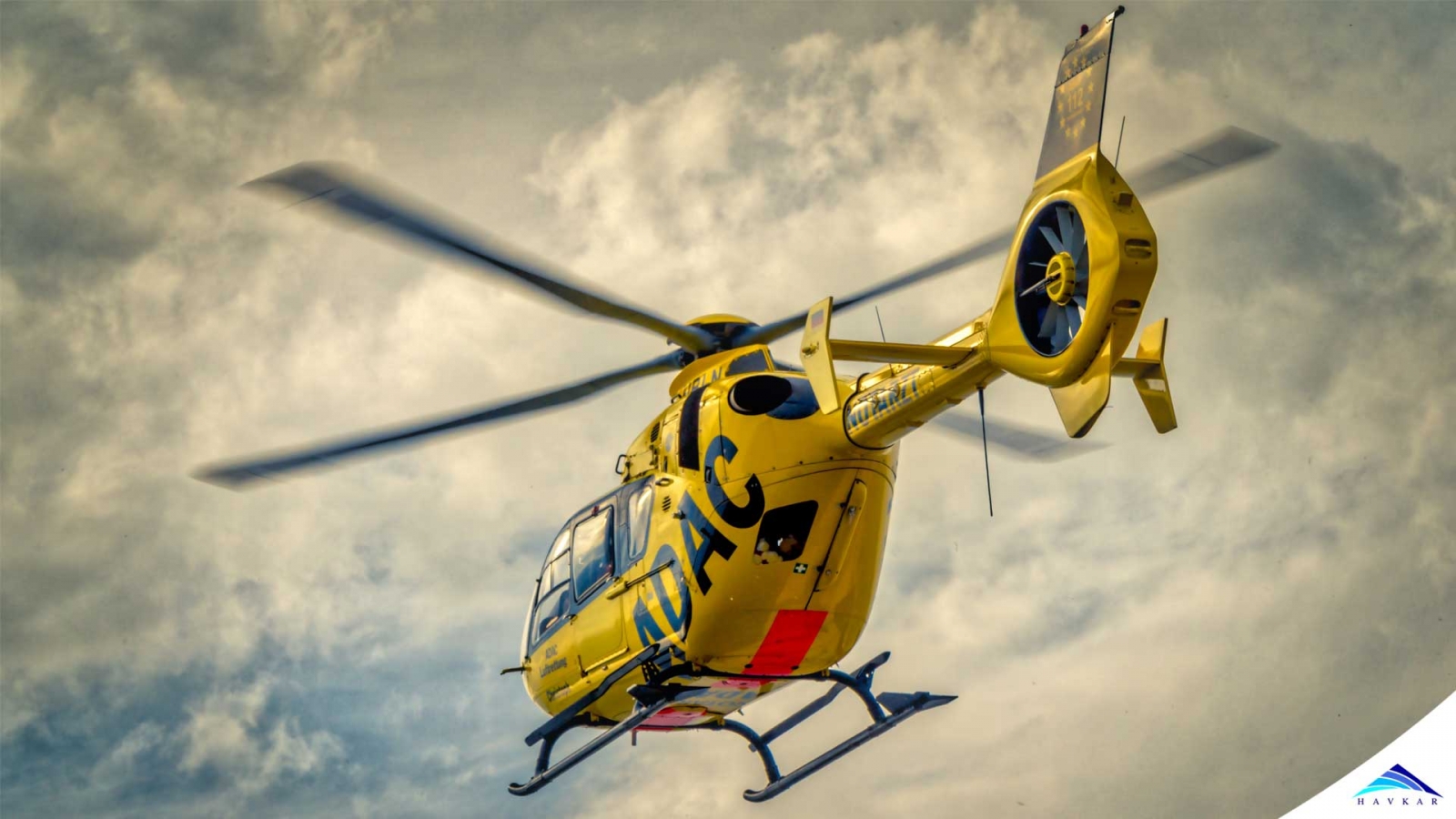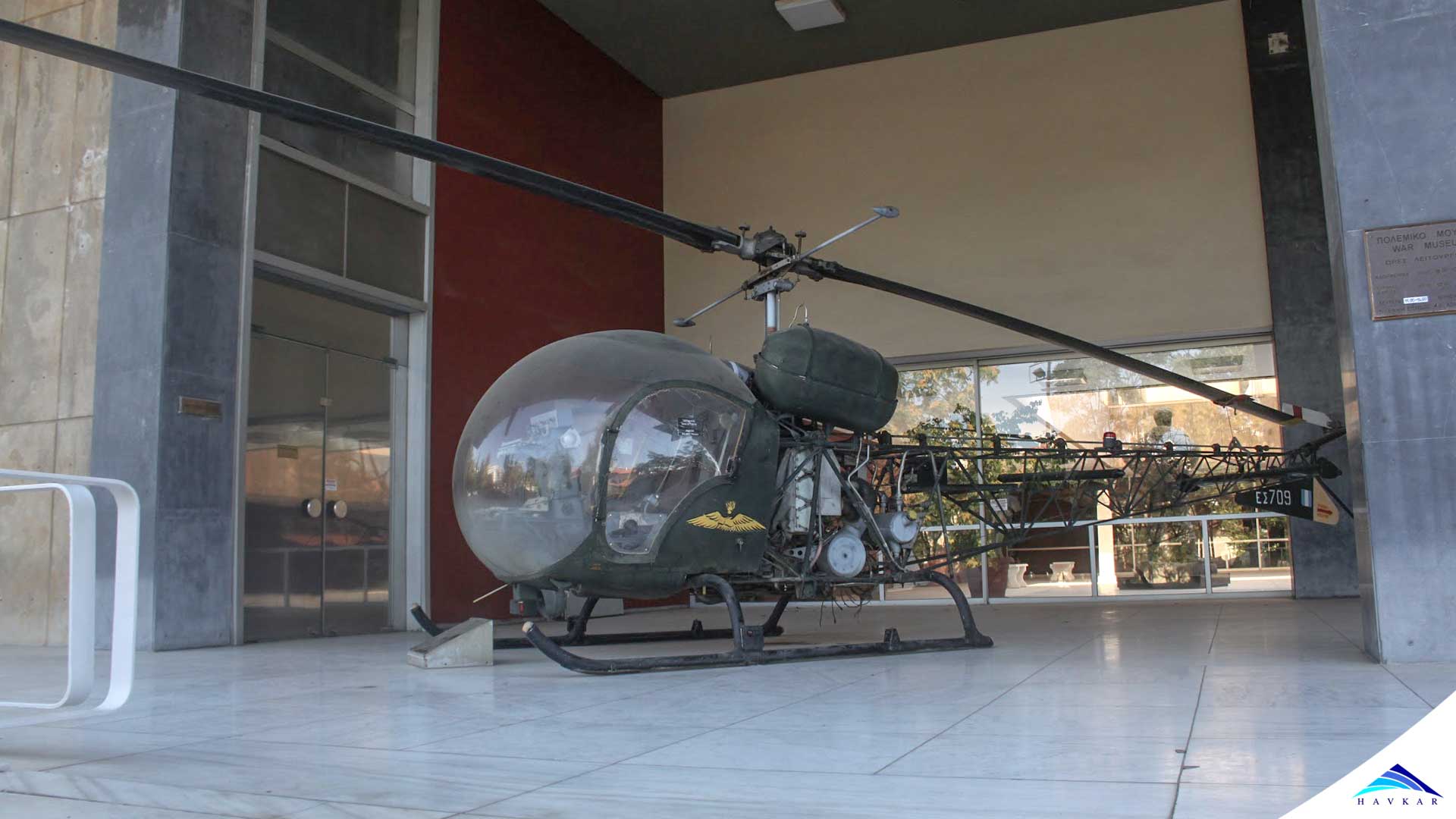
The development of helicopters, probably the most unnatural aircraft built by man that defies gravity itself, runs for centuries. Unlike aircraft development, the history of helicopters is a mixture of many smaller steps and it is very difficult to name a specific date or occasion for the breakthrough of its invention.
The first "developer" who received much attention was around 1483 Leonardo Da Vinci with his "flight spiral". The concept of the machine is also revealed by the etymology of the word helicopter that comes from the Greek helix (spiral) and pterion (wing). This study by Da Vinci is often referred to as the first attempt to design a working helicopter. Since the appropriate materials and drive to succeed were not available at the time, it remained in a study and it is difficult to say what phenomenon inspired him.

The idea of such a flying machine has fallen into obscurity for centuries for unknown reasons. Although the nature itself showed a glimpse of a rotary wing in the flight of the falling marple tree seeds, it remained pure biology and a toy for children.
However much earlier, in the 4th century BC Chr., another children's toy is described in Chinese script which has very similarities with a helicopter. On a wooden stick two opposite bird feathers were attached above. Now when the rod was put into a twist between the hands, this thing began to rise perpendicularly from it.
Between the Chinese toy, Leonardo Da Vinci and what is generally understood by helicopter today, there are many small developments, hardly noticeable progress and above all, a lot of idealism of people who just did not want to believe that it is not possible to take off and land vertically. However there were people who devoted themselves with more or less success to the development of a helicopter by building their unbelievable flying machines.
Important steps ahead were thanks to inventors like: the Russian Lomonosov in 1754 with “The helicopter with a box”, the Austrian Jacob Degen în 1817 “the coaxial helicopter”, Graf Adolphe de Lambertye from France in 1818 with the military ship “Aeriene, Sir George Cayley in 1843 with a project for a convertiplane, Gustave de Ponton d’Amecourt in 1861 with his steam model, the U. S. inventor Thomas Alva Edison in 1880 with his small helicopter models, Frenchman Gustave Trouve who built în 1887 and flew a tethered electrical model, Jan Bahyl from Slovakia in 1905 with his unmanned helicopter and last but not least the french brothers Jacques and Louis Breguet,1907, “Gyroplane No.1”. However there here were so many more...
Wilbur Wright arrived to his conclusion in 1906, “The helicopter is much easier to design than the airplane but it is worthless when done.” He didn’t know at the time that the history would turn, just like the propeller of the helicopter and a year after his statement, the first one took off the ground.
1907 is the year that begins the actual history of the helicopters, because it was the first time a person with a rotorcraft lifted off the ground.
The historiography is not quite in agreement who has accomplished this first hops. On Aug. 24 or Sept. 29, 1907, the brothers Louis and Jacques Breguet are said to have lifted their aircraft a few centimetres off the ground. But there are also documents in which only on 13 Nov 1907 by Paul Cornu the first flight in a "helicopter" was accomplished. Unfortunately, the truth can no longer be determined. However Cornu’s accomplishment was amazing considering the lack of equipment and funding. His helicopter was called “the flying bicycle” as an irony for the fact that he was a modest man building and selling bicycles for a living. Since he did manage to fly at a height of 1 foot (0.3 meters) for almost 20 seconds, he is considered to be the first.
However, the development of materials and, above all, aircraft engines played a very important role, which allowed after years of research the construction of a helicopter.

Paul Cornu’s Helicopter
The Spaniard Juan de la Cierva experimented until his accidental death in 1936 with the so-called autogyros. The difference to the helicopter is that in the case of the Autogyro the rotor is not rotated by a motor, but by the forward movement. This has the disadvantage that neither the vertical takeoff, nor the vertical landings are possible.

Many inventors followed like Raul Pateras-Pescara de Castellucio, Etienne Oehmichen, George de Bothezat (Gheorghe Botezatu, a romanian), Albert Gills von Baumhauer, Arthur M. Young, Oszkar Asboth, Corradino D'Ascanio, Boris N. Yuriev, M. Cheremukhin and Nicolas Florine, who designed and built models that each contributed to the development of the functional helicopter.
Everyone has been struck by the same problem: finding an engine that can spin a propeller fast enough to create a "load" or vertical force to lift the machine from the ground.
A practical appliance was created only in the 1930's by Igor Sikorsky, who constructed then his first helicopter, which crashed and was destroyed. After this failure, he turned first to the fixed-wing aircraft. It was only in the 1930s that he returned to his dream, and in 1939 he managed to develop the small anti-torque propeller installed at the top of the tail, which finally led to a fully functional, stable and easy-to-operate device.
He didn’t know back then that his name will become synonymous with helicopters, but he will be mentioned later.
The early developments of Danish watchmaker and electrical engineer Jakob Christian Ellehammer (1871 - 1946) are unlikely to be known. They engineered a rotorcraft with coaxial rotor system and a bow propeller, which was first driven by a self-constructed 6-cylinder radial engine (36 hp). More noteworthy, however, was the initial use of a system for cyclic and collective blade adjustment. Ellehammer demonstrated his device în 1912 to the public and reached a payload of up to 115 kg but crashed later în the year and ended his research on the subject.
During the First World War, Professor Theodor von Karman (1881 - 1963) and Wilhelm Zurovec constructed a so-called tethered helicopter as an observation platform in Hungary. The PKZ 2 was powered by three electric motors with a total output of 360 hp and reached an altitude of about 50 meters with a flight time of 30 minutes. The performance of the PKZ 2 was quite remarkable, but very unstable.
The autogyros (also called gyroplanes) were mainly used in England to monitor the coast and to calibrate the radar stationed there. With the advancing development of helicopters they lost more and more importance until they finally disappeared completely from the scene.
Between the two world wars many well-known personalities worked on the development of the helicopters.
In 1924, the Argentine Pescara built a helicopter with a coaxial rotor and a weight of 850 kg in Spain. It was the first helicopter which had a functional control over cyclic and collective adjustment of the rotor blades. The incredible speed of 13 km / h was reached. In the same year Etienne Oehmichen flew for the first time with a helicopter a closed circle. The flight time was 7 min 40 sec.
Hafner, Kamov, Breguet and others worked feverishly on their designs.
The first really usable helicopter was flown in 1938 by Hanna Reitsch in the Deutschlandhalle in Berlin. It is the Focke-Wulf Fw 61. Since Focke managed to solve more or less, the problems with the controls and for the first time precise hovering in place was possible, even in a hangar.
Anton Flettner was the first to develop a helicopter with rotors turning in opposite directions. The design was very complex because of the special gear and therefore took longer than planned. The flight of the Fl 265 took place in May 1939 in Berlin-Schönefeld. One of the few helicopters that played a certain role in the Second World War was the Flettner Fl 282. This helicopter was used by the country as well as by ships, for transport and connection tasks.
After all, the development of helicopters is once more linked to the name Igor Sikorsky. The Russian, born on May 25, 1889 in Kiev (today's Ukraine), was living in America and in 1938 the US Senate approved a budget of $ 2 million for his research.
Sikorsky was the first designer to build a helicopter with only one rotor.

Sikorsky test flying the VS-300.
He competed with Lepage’s XR1 for the US army and succeed
Various experiments with two tail rotors which were arranged horizontally, ultimately led to the still most widespread design today with a main rotor and a vertically arranged tail rotor.
Sikorsky had to gain a long battle to win the US Army attention, but finally they became interested in his designs, and the rapidly expanding Sikorsky company gained its worldwide reputation.
During the Second World War, the W-5, W-6 in the UK, and the VS-300 in the US became the first military helicopters capable of carrying a 500 kilogram load at a medium speed 100 km / h.
Another success by Sikorsku was the R-4. Its transfer to the US Army took place on 18 May 1942. It was planned to carry out further test flights, but this made a transfer of the helicopter from Bridgport (factory of Sikorsky) to Dayton necessary. It was decided not to drive this 760 miles on a vehicle, but to fly. So, on May 15, 1942, an unknown crew starts, followed by a wagon train of engineers to land in Dayton after 5 days and a total flight time of over 16 hours. This flight is the first practical flight of a helicopter.

Sikorsky R4B
USAF museum
With the Army's interest in the helicopter, development accelerated, especially in America.
Of course there is much more to write about the early days of helicopter flying, but especially about the 1940s, where significant advances in technology have been made.
There are also some other well-known personalities who could not resist the passion of helicopters. The following pictures are intended to give a very brief outline of the late and after the 2nd World War developments.

Sud Est Aviation (Aerospatial) SE-3000
Development of the German helicopter FA223

Bell 47
The first helicopter certified for civilian use on 8 March 1946

in the U.S.A , Piasecki PV-2, was the successful helicopter flown as second time.
The PV-2 was flown on the 11th April 1943